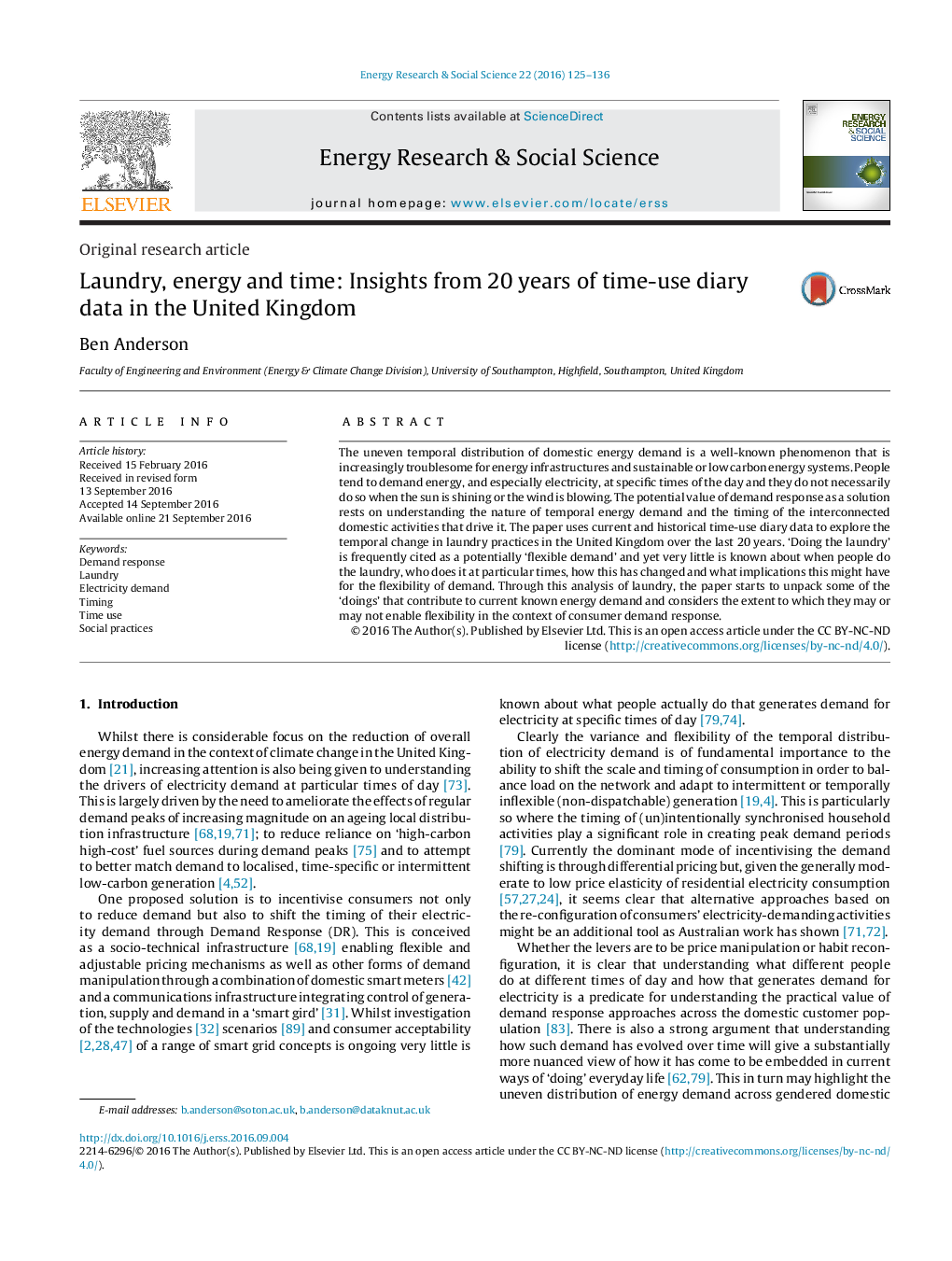| Article ID | Journal | Published Year | Pages | File Type |
|---|---|---|---|---|
| 6464164 | Energy Research & Social Science | 2016 | 12 Pages |
â¢Effective demand response requires analysis of the timing of electricity demand.â¢Historical time use survey data reveals evolving demand & traces of flexibility.â¢Increase in Sunday morning & early weekday morning laundry, decrease in weekday daytime laundry.â¢Increased women in work force & other social constraints may drive laundry timing.â¢Energy demands continually evolve through societal transformation.
The uneven temporal distribution of domestic energy demand is a well-known phenomenon that is increasingly troublesome for energy infrastructures and sustainable or low carbon energy systems. People tend to demand energy, and especially electricity, at specific times of the day and they do not necessarily do so when the sun is shining or the wind is blowing. The potential value of demand response as a solution rests on understanding the nature of temporal energy demand and the timing of the interconnected domestic activities that drive it. The paper uses current and historical time-use diary data to explore the temporal change in laundry practices in the United Kingdom over the last 20 years. 'Doing the laundry' is frequently cited as a potentially 'flexible demand' and yet very little is known about when people do the laundry, who does it at particular times, how this has changed and what implications this might have for the flexibility of demand. Through this analysis of laundry, the paper starts to unpack some of the 'doings' that contribute to current known energy demand and considers the extent to which they may or may not enable flexibility in the context of consumer demand response.
